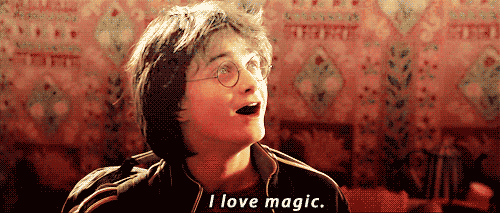
 As a reader, writer, and editor of fantasy fiction, I love a good magic ability in my characters. (I mean, Harry Potter, The Hobbit, The Name of the Wind… these stories make me so happy!) Something that sets them apart, makes them different from the rest of the people in their world. A secret weapon that they can pull out to use when it seems like they’ve reached the end of their rope. Magic and the possibilities that magic creates in a world are the reasons I read fantasy fiction.
As a reader, writer, and editor of fantasy fiction, I love a good magic ability in my characters. (I mean, Harry Potter, The Hobbit, The Name of the Wind… these stories make me so happy!) Something that sets them apart, makes them different from the rest of the people in their world. A secret weapon that they can pull out to use when it seems like they’ve reached the end of their rope. Magic and the possibilities that magic creates in a world are the reasons I read fantasy fiction.
However, in order to have a well-crafted story, you have to give serious thought as to how you use magic. If you don’t, you risk breaking faith with your reader and ending up with a story whose conclusion falls flat instead of creating a sense of satisfaction for your reader.
Here are four things to watch out for when writing characters with magical powers.
- Magic has rules. Figure out what yours are, tell your reader what they are, and then don’t break them. Make sure you set up what the rules are fairly quickly so that your reader doesn’t get the impression that you’re going to take advantage of them and stretch their suspension of disbelief too far.
- Magic powers should be set up fairly early. Don’t add a new power for each problem that your characters face. Let them test the limits of their power and, more importantly, let magic fail them occasionally. The story you’re telling will be infinitely more interesting if your characters don’t succeed every time they face a challenge.
- Magic has consequences in direct proportion to the power of their effect. If you’re going to give a character the power to save the day, it needs to cost something. If all your characters use magic for is cleaning up a mess, the cost goes down.
- Magic is not a convenient way to explain some difficult part of your story. Don’t give your character the power to read minds in order that they can have access to information they wouldn’t otherwise know. Remember that it’s a character’s weaknesses that make them interesting, not their all-powerful abilities.
What’s one of the first things that happens when a story with magic is released to the public? They try to figure out where the magic systems break their own rules or fall short of adequately explaining themselves.
If you can master these four facets of writing magic into your stories, you’re well on your way to building a stellar magic system that your readers will enjoy for a long time to come.














